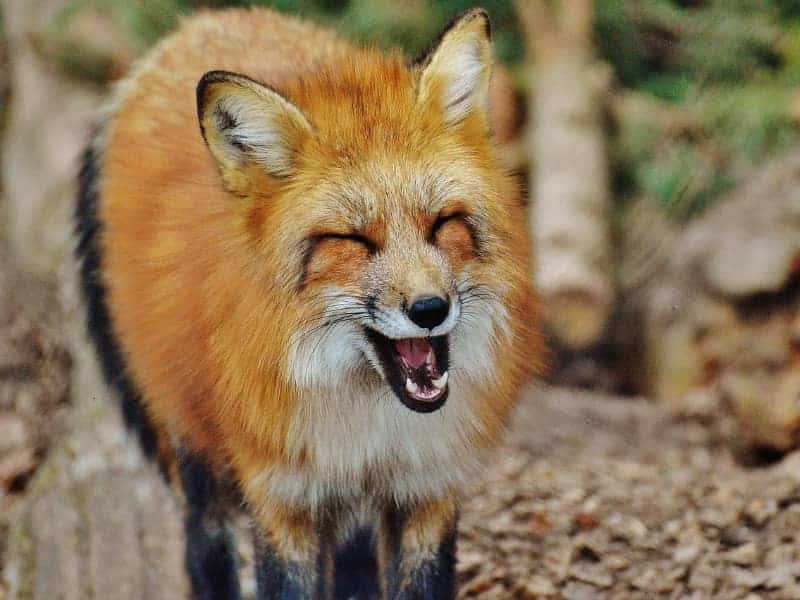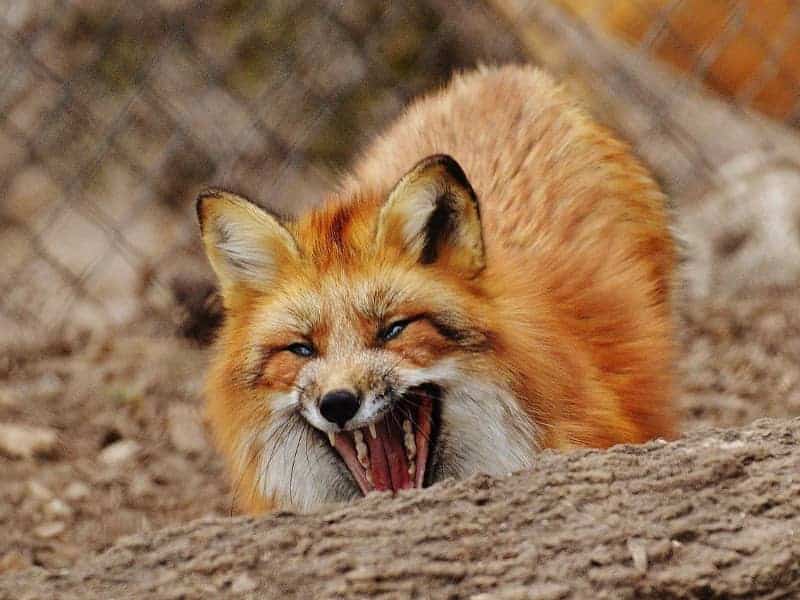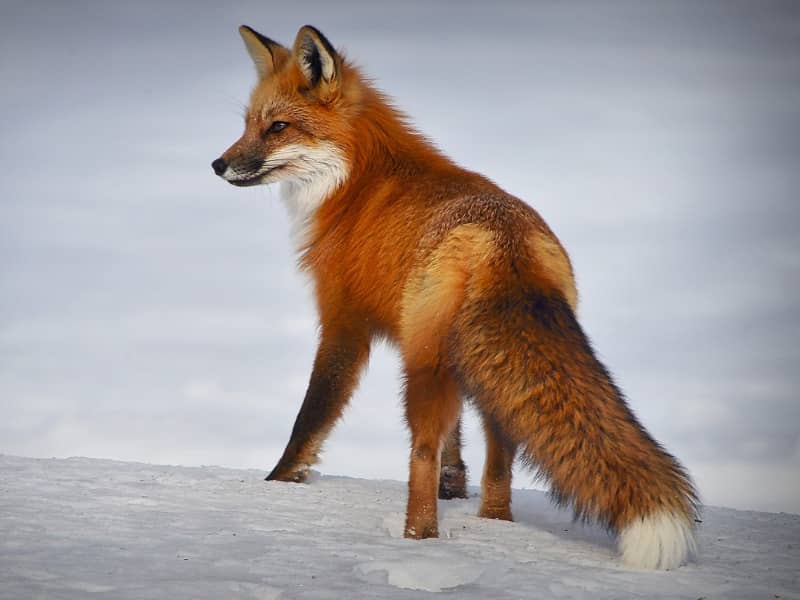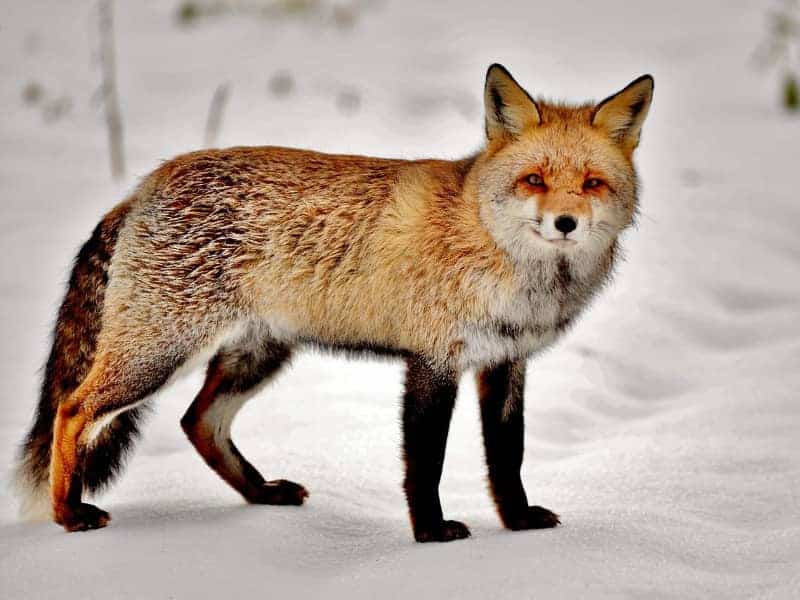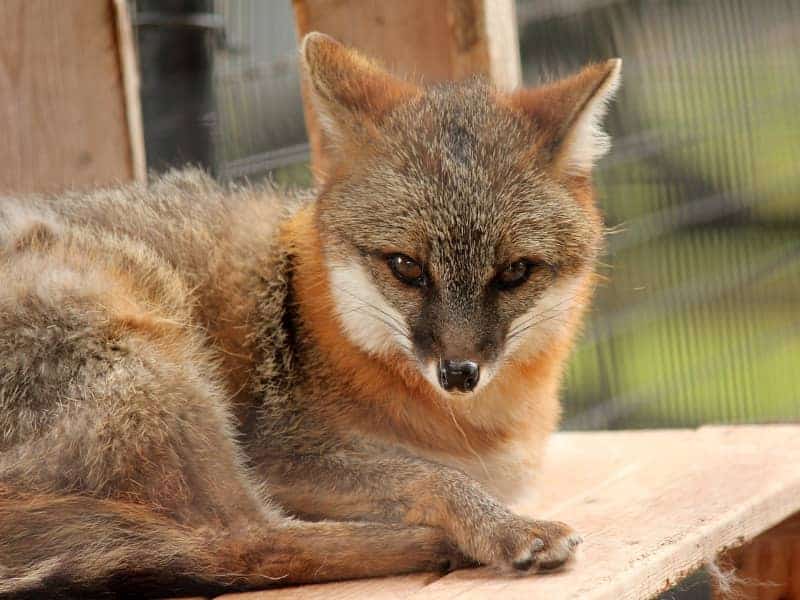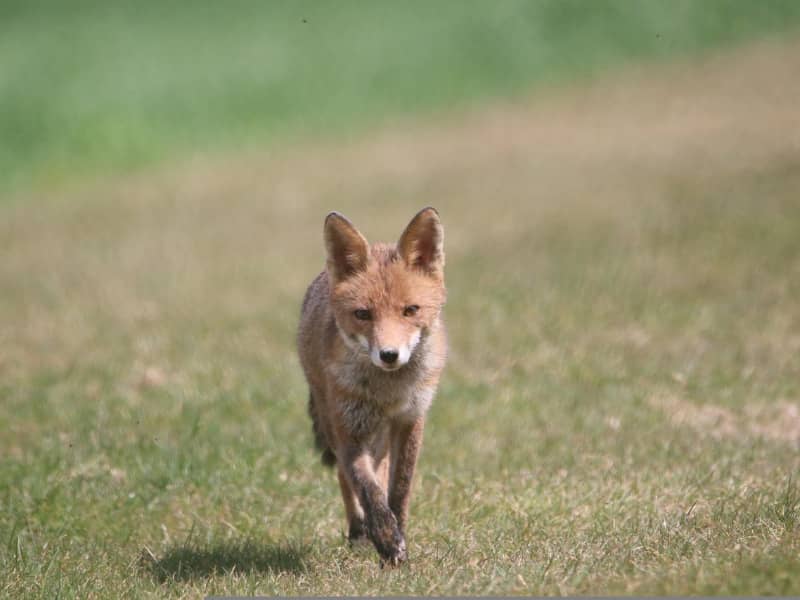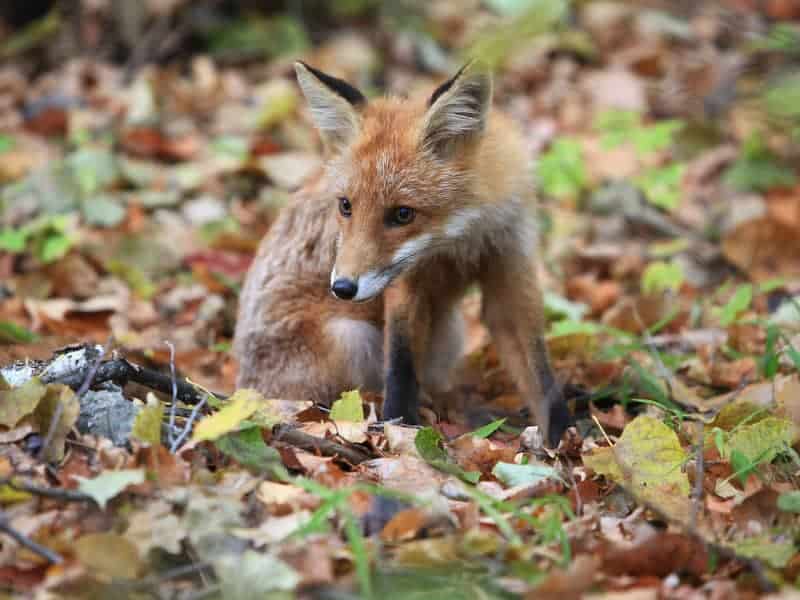
Fox species
The different fox species are spread all over the world, except in Australia they occur naturally everywhere. Only there one fox species, namely the red fox, was introduced by people and spread quickly there as well and became native. Foxes are extremely adaptable and this also ensures their global spread. The different fox species have adapted to the respective habitat.
Thus, the arctic fox lives in cold regions and has a particularly dense fur that in excellent protected from the cold. The Fennek in turn lives in the hot regions of North Africa and is the smallest fox species with particularly large ears. All these fox species we would like to introduce you here and give you information about how and where they live.
Identical characteristics of the fox species
From a biological point of view, there are twelve species of true foxes that belong to the genus Vulpes. They are omnivores, but prefer meat as their main food source. This is ingested in the form of rodents, such as rabbits or mice. If fresh meat is not available, then they are also content with carrion or scraps left over from other predators.
Insects, eggs and birds are also on the menu. Fox species that have settled near humans like to raid a compost heap or garbage can to find something edible. In the same way, a hedgehog run over on the road is a pleasant change in the fox's diet.
Enumeration of fox species
As already mentioned, there are twelve species of foxes, which belong to the genus of dogs, but form their own subgroup. Furthermore, there are some species that belong to the genus of true dogs and have a fox-like appearance. This includes among others the Gray fox, the Andean fox, fighting fox as well as the short-eared fox. But now to the fox species that are native to the world.
The red fox
The red fox is the most widespread fox species in the world. It is also the only fox species that is native to Central Europe. This is also the reason why the red fox is the most common wild dog in Europe. They have excellently adapted to life with humans and are cultural followers, this means that they follow people to take advantage of the benefits, such as kitchen scraps from him.
However, red foxes also live in forests and meadows, where they make their den in hedge areas. The male foxes have a length without tail from 65 to 75 cm and the females from 62 to 68 cm. The tail length in the male is 35-45 cm and in the female 30-42 cm. The average body weight in the fox is 5.5-7.5 kg and in the female 5-6.5 kg.
The coat is reddish on the upper side and white on the belly up to the tip of the nose, i.e. on the underside of the body. Depending on the habitat, the hue of the upper side is reddish yellow to a strong reddish brown. The underside is mostly white, but can also drop to a light shade of gray. Often lower parts of the legs and the tips of the ears are colored black.
Fennek or desert fox
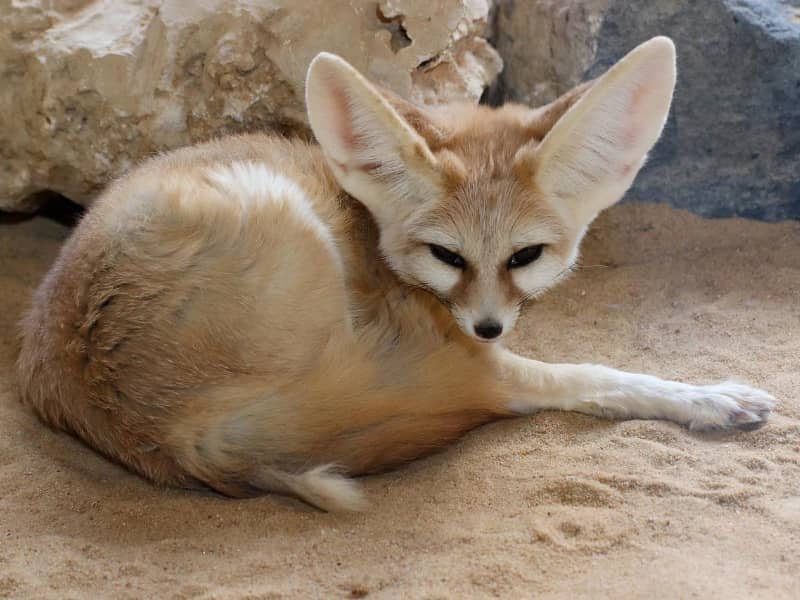
The Fennek is the smallest fox species and inhabits exclusively the sandy deserts of North Africa. Its small body size, hairy soles and large ears have made it perfectly adapted to the desert climate. The desert fox feeds mainly on insects, mice, lizards and birds, as well as the eggs of these. But fruits and plant tubers also appear on the menu.
Just as with the red fox, the fennec is not a food lover, so the desert foxes regularly visit human settlements in search of food (food scraps). The body length of this fox is between 33 and 40 cm, the tail of the animals becomes between 13 and 25 cm long. The weight of the female and male animals is between 1 and 1.5 kg.
The coat in the animals has a sandy tone and different colorations. These can be beige, reddish or gray. Also in this type of fox, the underside of the body is colored lighter than the top, here the fur color can go into the white. However, is usually covered with a shade of gray. The Fennek has large ears, which make up to 20 % of the body surface, these he needs for temperature regulation.
Arctic fox
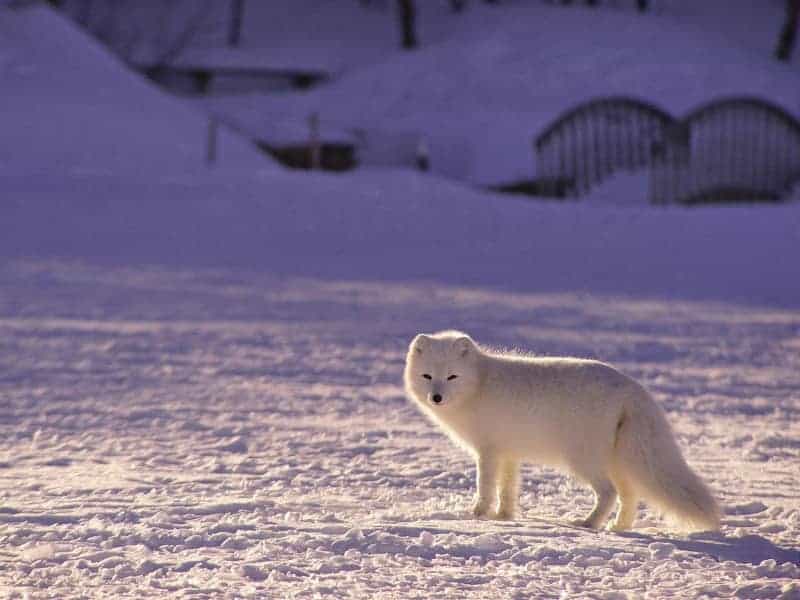
The Arctic fox is native to the entire northern polar region. He is the second species of fox that lives the European continent. It has found a home in northern Scandinavia. As with the Arctic hare, the paws of the Arctic fox are covered with a dense fur. This ensures that even on icy ground, the body heat still does not escape too quickly under fox survives the freezing temperatures.
The arctic fox is also an omnivore and its main prey are the different lemming species that live in its vicinity. It also hunts mice and can detect them through thick layers of snow thanks to its excellent sense of smell. This fox species also helps itself to carcasses and the nests of nesting birds. Even the chicks are not stopped.
The shoulder height of the Arctic fox is about 30 cm and the animal weighs between 4.5 and 5 kg. The total length of the animal is between 65 and 90 cm. At the same time, the length of the tail reaches about 35-45 cm. The arctic fox changes its coat color according to the seasons. In summer, the top of the coat is brown and the belly is light beige to gray hair.
Two different color versions appear in the winter coat. One is pure white, as you would imagine an arctic fox to be, and the other is blue. Accordingly, the arctic fox is divided into two groups. These two groups are called "white fox" and "blue fox". The blue fox has different color shades from light gray to dark blue and rarely even black.
Bengal Fox
One of the least known fox species are the Bengal foxes. It lives in the southern foothills of the Himalayas up to an altitude of about 1500 meters. For this purpose it has spread in Nepal, Pakistan, India and Bangladesh. Only in this region the most common fox. Why so little is known about the animal is easily explained. There have been hardly any studies about him.
Its ecology was first studied in 2005-2008. Scientists assume that Bengal foxes live in a permanent pair bond. This fox is also crepuscular and nocturnal. Like the other fox species, it is omnivorous and feeds on small animals, but also on the contents of birds' nests and reptiles. Likewise, fruits are included in the diet as a variety.
The Bengal fox reaches a body length of 45-60 cm, this is complemented by a 25-35 cm long very bushy tail. The body height is about 28 cm and the Bengal Fox reaches a weight between 2 kg and 3 kg. The coat is short and sandy to reddish brown on the upper side. The underside is kept a little lighter and the tip of the tail is black in almost all animals.
Kitfuchs
The kit fox lives in North America in dry areas, it was hunted in earlier times for its beautiful fur. This species of fox prefers the dry lands, but there must be a loose soil to make the fox den in it, where he raises the young. It lives only sporadically near humans and has been sighted at altitudes up to 1900 m.
Kit foxes are mainly active at dusk and at night. They feed on rodents, such as prairie dogs and rats, but rabbits, birds and insects are also on the menu. Also, the kit fox eats carrion and, at times, plants. This is mainly when the in agriculturally used areas and orchards its fox den.
It grows between 73 and 84 cm long including the tail and reaches a weight of 1.4-2.8 kg. The males and females differ only slightly in body size. The coat is short and it shimmers in a gray tone. The head and the sides of the body are mostly yellowish gray and the belly and the insides of the legs are yellowish white. He a dense pubescence between the pads of the feet and the tip of the tail is black.
Rüppellfuchs or sand fox
This fox species lives in desert and semi-desert areas. Its range extends from North Africa over the Arabian Peninsula to the Near East. Its habitat is constantly changing, this has to do with the fact that it mainly stays in the semi-desert areas and these are spreading more and more. The reason for this is the climate change and so the habitat of the Rüppellfuchs becomes smaller and smaller.
The sand fox feeds on small mammals and insects. Birds are also on its menu, as well as plant material. Depending on the habitat and food supply, the grasshopper hunts grasshoppers and beetles or even small vertebrates. These are mice, birds or lizards. Again and again one sees the fox also in areas of oases, where it climbs on date palms and is the fruits.
The Rüppellfuchs has a length without tail of 30-40 cm and is thus a small fox species. The tail is 28-32 cm long and the body weight is between 1.3 and 2.3 kg. It reaches a shoulder height of 30 to 35 cm and the females are only slightly smaller than the males. It has a light and dense coat that is sandy to beige in color. On the underside it is white.
Tibet fox
The Tibetan fox is also called Tibetan sand fox, it lives in the steppes, as well as in the semi-desert areas in the highlands of Tibet. From an altitude of 2500 up to 5200 m lives this fox species. These foxes have a very dense fur, this you need also, because they occur in a very inhospitable habitat. Unfortunately, this fox is also weakened in its population, because fur hunters are targeting the animal.
The Tibetan fox feeds mainly on whistling hares and other small mammals. But it also takes birds, insects and plants when it cannot hunt mammals. The Tibetan foxes live monogamously together as a pair for many years and give birth to 2-5 young every year in their fox den, where they also raise them.
The male Tibetan foxes grow 56-65 cm long and have a tail length of 25-30 cm. Their weight is 3.8-4.5 kg. The female foxes have a length of 50-60 cm and a tail length of 22 to 26 cm. Their weight is between 3 and 4 kg. The coat is gray to sandy on the upper side, there is a yellow-brown longitudinal stripe running down the back. The lower sides of the body are gray and the underside light gray to white.
Swiftfox
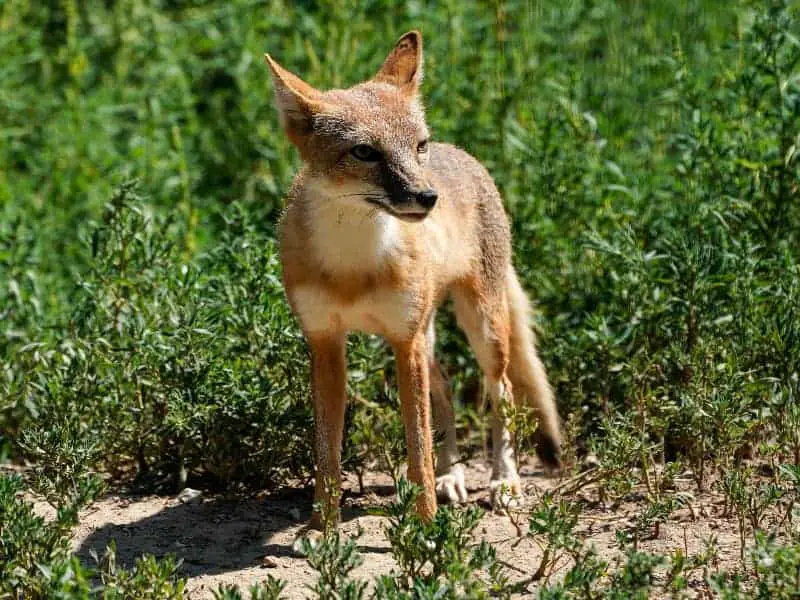
The Swift fox is a species of fox that lives primarily in dry areas of western North America. The kit fox is its closest relative, but it differs from it by a smaller body size. It lives in short grass prairies and loves sandy ground. There it digs its burrow with a length of 3-4 m, which has four entrances/escape passages. The animals are active at night and at dusk.
The Swift Fox feeds on a wide variety of small prey depending on the season. These can be small mammals, but also birds, amphibians and insects. If these animals are not available, then plant components are also added to the diet. Here, mainly berries are ingested. When fleeing or hunting, the small fox can reach 50 km / h.
Swift fox is the smallest fox species that lives in North America. The fox grows 44-52 cm tall and its tail length is 28-32 cm. It has a weight between 2.2-3 kg and the female foxes become only insignificantly smaller. The coat in the basic color light gray with an orange-brown coloration on the sides of the body. The underside of the coat is cream. The tail has a black tip and the sides of the muzzle are also colored black.
Blow Fox
This fox species lives south of the Sahara in the semi-desert areas there. There the pale fox populates dry savannahs and the fringes of the Sahara. Rarely the penetrates also into the real desert. Impressively, they cope well with dry periods with very little water. They take liquid mainly from eating prey animals and fruits.
Like most fox species, the pale fox is mainly nocturnal. During the day, it spends its time in burrows it has dug itself, which reach a depth of 2 to 3 meters. Not infrequently, these burrows reach a length of 15 m and are inhabited by several animals. Their diet consists mainly of fruits, such as bears, melons and their plant parts, which is supplemented by birds, small animals and carrion.
Swift fox has a trunk length of 38-55 cm, the tail is 23-29 cm long and its body weight is about 2-3.5 kg. This is a large range, but is due to the region in which the fox lives. He has a very thin coat, which is pale beige. The legs and sometimes the back have a reddish brown tone. The belly side has a light cream tone that almost goes into white.
Cape Fox
The Cape fox is the only fox species that has settled in southern Africa. It is also known as the kama fox or silverback fox. The Cape Fox is nocturnal and hunts alone. It feeds on lizards, insects, mice and other small animals, as well as carrion and fruits. It lives monogamously or with a small group of related animals.
The Cape fox is widespread in southern and southwestern Africa. At times, the population is so high that population controls are necessary. This is the only way to contain the massive spread of this fox species. Natural predators of the Cape Fox are leopards, desert lynxes and honey badgers. Nevertheless, there is always competition and their living dens.
Here the Cape foxes are targeted by larger groups of meerkats and driven out of their dens. The fox has particularly large ears and a dark mouth region. The shoulder height is 35 cm and its weight is 2.5-4 kg. It has a trunk length of 45 to 62 cm and a tail length of 30 to 41 cm. The coat is silver-gray on the upper side and sandy yellow to white on the underside.
Afghan fox
The Afghan fox lives mainly in Central Asia and parts of the Arabian Peninsula. Together with the Fennek, it forms the two smallest fox species in existence. It prefers the dry mountainous regions up to an altitude of 2000 m to live there. However, the fox also moves to desert and steppe areas. Its territory is tiny compared to a European red fox and limited to a maximum size of 2 km².
Here, the foxes usually live as a monogamous pair and are nocturnal. This protects them from birds of prey that hunt during the day. During this time they sleep in caves or rock crevices. Their food consists mainly of insects such as grasshoppers, beetles, ants. However, they also consume a wide variety of fruits, including grapes, dates and melons, as well as the plant material from them. They also eat a wide variety of sweet grasses.
The Afghan foxes reach different sizes depending on the habitat. Thus, a head-torso length of 38.5-80 cm has been measured in adults. Females are only slightly smaller and the tail length in both animals is between 25 and 40 cm. The weight of the animals is 0.8-1.5 kg. The soft fur is gray-brown colored on the upper side, with a black dorsal line. The ventral side is white with a slight yellow tinge.
Steppe Fox
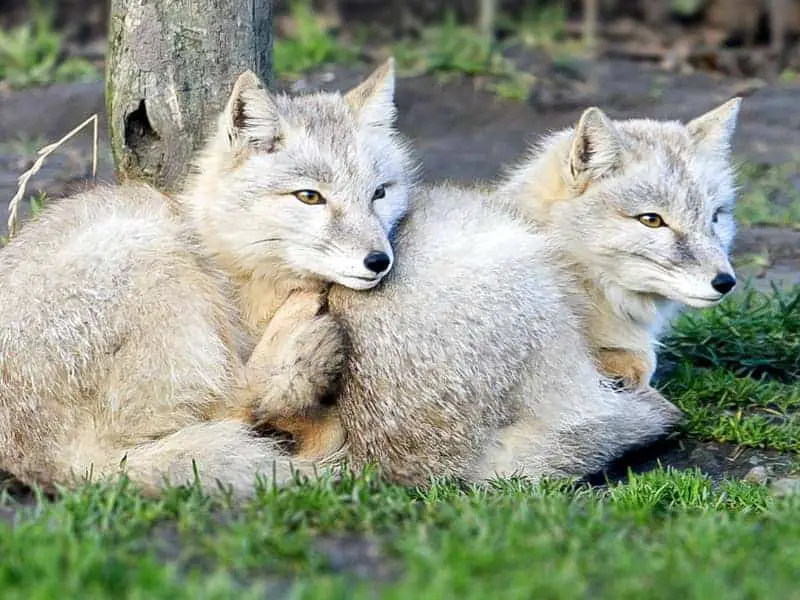
The steppe fox lives in the eastern fringe of Europe on the lower Volga. The habitat thus extends over Western Asia, Central Asia to Manchuria and Tibet. Its habitat is mainly steppes and semi-deserts. It feeds primarily on meat, which it captures primarily by hunting insects and small mammals.
As a steppe dweller, the steppe fox can go for long periods without water or food. Likewise, it can do well in cold weather and adapt to any extreme weather. It forages mainly at waterholes, where it can easily find prey. It is nocturnal and its hunting season begins in the evening. It lives in a family group and usually uses the burrows of other animals, such as marmots or badgers.
The steppe fox has a length of 45-60 cm and a tail length of 24-35 cm. Its weight is 1.6-3.2 kg and the male here is heavier than the female, but has a similar body size. The females weigh 1.9-2.4 kg on average. The animals have a brown-gray to reddish coat in summer and a white coat on the belly. The winter coat is much lighter, with the same shades and denser to better protect against the cold.
Author

-
Garden animal - A life with nature
Welcome to my animal blog! My name is Dirk and I am happy to take you on my journey through the fascinating world of animals and gardening.
Born 54 years ago, I have had an insatiable curiosity for the animal world around me since childhood. Although I have moved professionally in other industries, my true passion has always been animals and nature. It is remarkable how a small garden has become such an important part of my life.
Many of my fondest memories are associated with the animals that share our home. Whether it's the curious squirrels that scurry across the trees in the morning, the colorful variety of birds that visit our feeders, or the busy bees and butterflies that pollinate our flowers, every moment with them is invaluable to me.
This blog is my contribution to share my experiences, discoveries and insights with like-minded people. Here I will share stories of unforgettable encounters with animals, give tips on gardening and creating wildlife-friendly habitats, and take you on my journeys through nature.
Thank you so much for being here!
Cordial,
Dirk aka garden animal
Last posts
- 27. February 2024PetsVeganes Hundefutter – Grün und Gesund?
- 18. January 2024ChickensOregano für Hühner
- November 27, 2023HamsterDiurnal hamsters
- November 24, 2023HamsterHamster hammock

